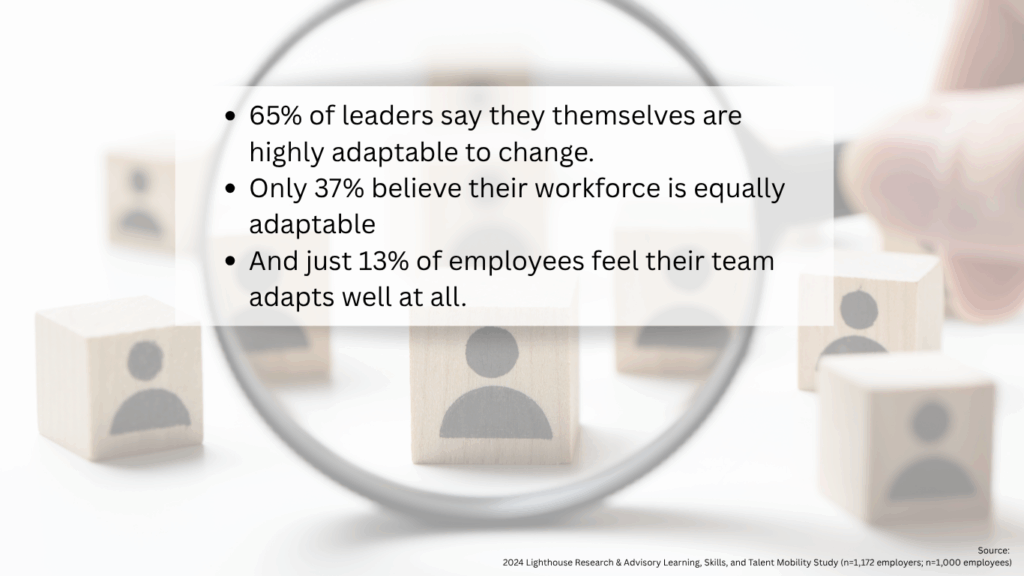We’ve all been there.
You’re looking for something: your keys, your wallet, maybe your favorite pen. It’s sitting right in front of you, but somehow, it’s invisible.
But seeking?
That’s a different experience entirely.
When the TV remote goes missing minutes before your team kicks off, suddenly the whole house becomes a search-and-rescue unit. Cushions fly. Drawers open. You call in reinforcements. You are intentional. Focused. Determined.
That difference between looking and seeking is exactly where HR finds itself today.
Many organizations are looking at new HR technology. They’re exploring AI tools, reviewing dashboards, and upgrading systems. But fewer are seeking what those innovations are truly meant to unlock:
-
Better human connection
-
Smarter, values-aligned decision-making
-
Cultures where people feel trusted, seen, and supported
Our latest research at Lighthouse Research & Advisory reveals a critical tension. While:
-
65% of leaders say they themselves are highly adaptable to change,
-
Only 37% believe their workforce is equally adaptable,
-
And just 13% of employees feel their team adapts well at all.
In other words, leaders believe they’re prepared for what’s coming, but their people don’t share that feeling.
This is the Leadership–Reality Gap.
And that gap widens when we focus solely on the next HR trend instead of pursuing meaningful organizational growth.
For example:
We look at AI to automate workflow…
But are we seeking ways to make work more human and equitable?
We look at recognition platforms to measure engagement…
But are we striving to create cultures where people genuinely feel valued, respected, and supported?
We look at talent acquisition tools to speed hiring…
But are we seeking to bring in people who align with our mission and purpose?
Seeking requires intention. Seeking requires clarity. Seeking requires purpose.
It’s not about speed, it’s about direction.
So what should HR and leadership teams do next?
-
Reconnect learning and culture. Development isn’t a program. It’s an ecosystem.
-
Design for adaptability. Teach teams how to navigate change, not just react to it.
-
Measure what matters. Engagement isn’t a score, it’s a story.
The organizations that thrive won’t be the ones that simply adopt new tools.
They’ll be the ones who seek alignment, meaning, and human connection in how those tools are used.
It’s time to move from looking to seeking.
And the future of work depends on it.

George Rogers is the Chief Strategy Officer at Lighthouse Research & Advisory. He is an author, coach, and globally renowned keynote speaker acclaimed for delivering compelling insights on cultivating purpose-driven, profitable businesses. As a leader developing inclusive and motivating workplace environments, he consistently provides transformative perspectives and guidance to organizations worldwide. Over the past two decades, he has dedicated himself to inspiring leaders and transforming workplace cultures.
In his book Champion Your Purpose, we learn that finding purpose in life looks different for everyone, and very few will find the exact common purpose that aligns the exact same. He provides a step-by-step approach to help readers identify their purpose and align it with their personal and professional goals.
His research focuses on leadership and its impact on performance, engagement, culture, mental health, inclusion, and belonging. If you ask him what led him to the HR space, he will remind you that his passion and purpose are championing people.
With over 25 years of leadership and keynote speaking experience, he has inspired, empowered, and challenged every audience —virtually and in person —to discover their purpose in the workforce, learn how to Champion Your Purpose individually, and lead the life they love.


